Dan loves teaching! His teaching goals are threefold: 1) to instill students with a questioning attitude and provide them with the tools to tackle those questions; 2) to take an interdisciplinary approach that inspires students to appreciate multiple perspectives and to integrate knowledge and methods from diverse disciplines; and 3) to foster discussion and collaborative work among students to empower them to become teachers and mentors themselves.
Evolutionary Developmental Biology
Spring 2022, Winter 2023, University of Oregon
The most striking feature of life on Earth is its diversity. Swift runners, graceful swimmers, terrifying predators, resplendent sunbathers, diggers, climbers, flyers and thinkers: there are many ways to make a living. How do we explain the origin of this diversity? This course will investigate, from the perspective of developmental biology, how evolution happens. We will uncover deep homologies that unite living organisms and fundamental rules about how embryos - and the adult forms they generate - change across the eons.
Mutants and the Making of Us
Clark Honors College, Spring 2021, University of Oregon
From Homer’s cyclops to CRISPR technology, circus “freak shows” to evolutionary biology, X-men comics to designer babies, the idea of mutation has a long history in science, literature and culture. As I write this, the news is filled with stories about an emerging variant of COVID-19 that is rapidly spreading in the UK. This new strain, a “mutant”, seems to be more transmissible and is beginning to outcompete other strains; we don’t yet know whether it causes more severe symptoms.
Mutations change the properties of viruses, tweaking how they interact with our cells and altering the damages they may cause. Mutations also underlie the recent emergence of bacterial superbugs and, when mutations strike our own DNA, they can cause countless diseases including cancer. But mutations are also central to the evolution of life on Earth, creating the amazing diversity we see around us. Our own long history of mutations, back through the eons, is why we are here and why we are the way we are. And now, in the laboratory, scientists are creating mutant animals — the mouse with extra toes or the fly with a leg growing from its head — to understand the deep secrets of how animals develop, how we build ourselves from the starting point of a single cell.
In this course, we will try to understand the idea of “mutation”, integrating concepts from genetics and evolutionary biology, developmental biology and medicine, disability studies and literature, philosophy and ethics. We will learn about why mutations occur, what effects they have, and how we can use them to understand—and change—the world around us. Through our study of mutants, we will hold a mirror up to ourselves and ask, from a variety of perspectives, where did we come from, how are we made, and what does it mean to be human?
The course was recognized as a finalist for the Faculty Excellence in Universal Design Award at the University of Oregon.





